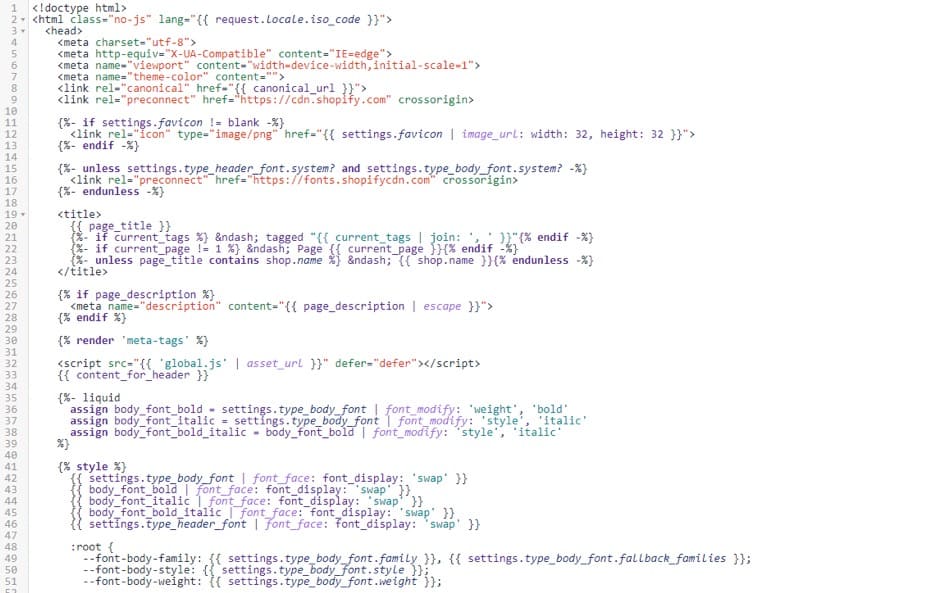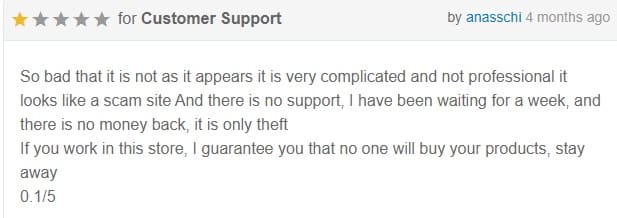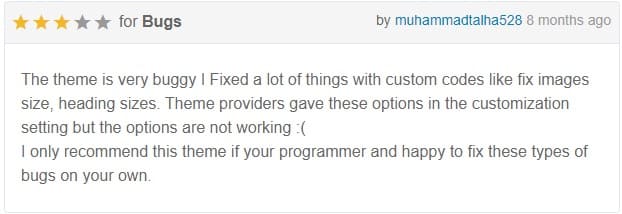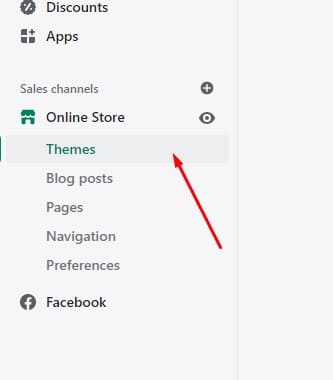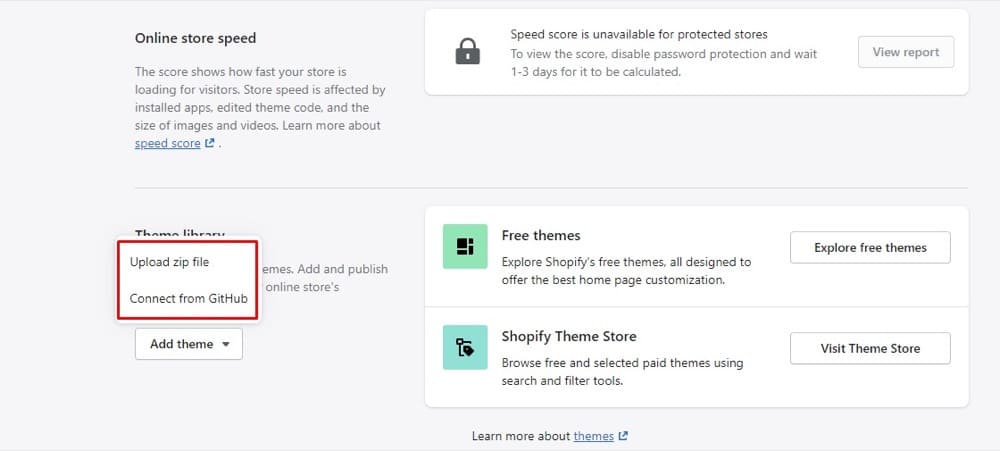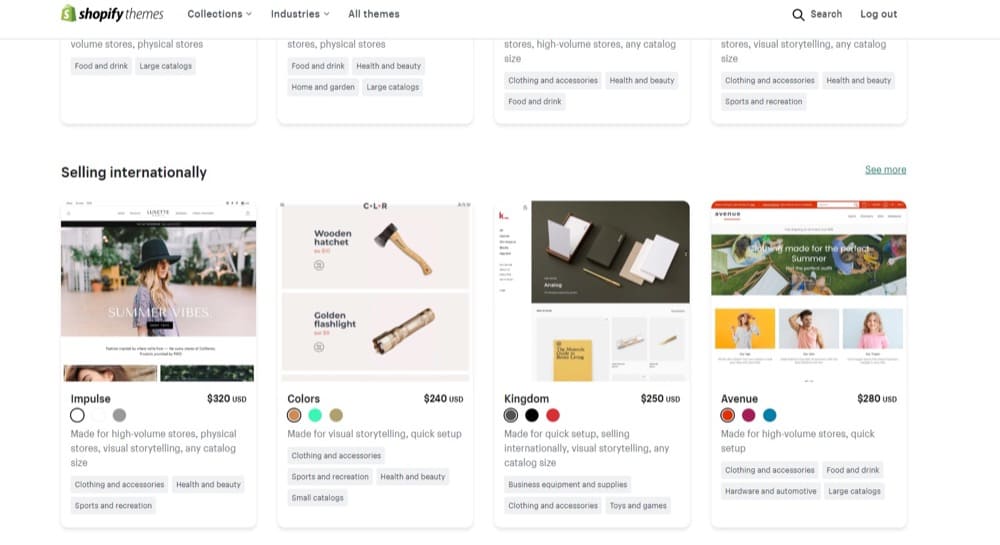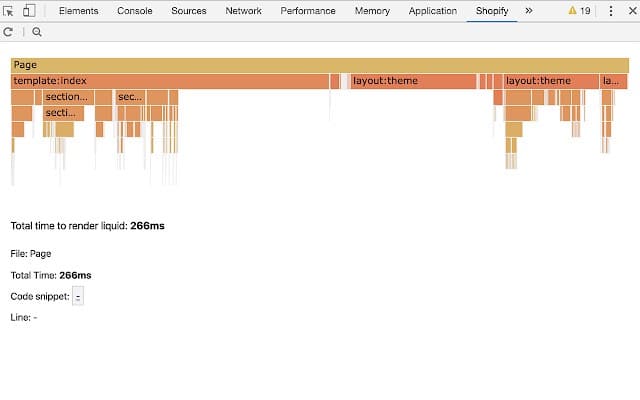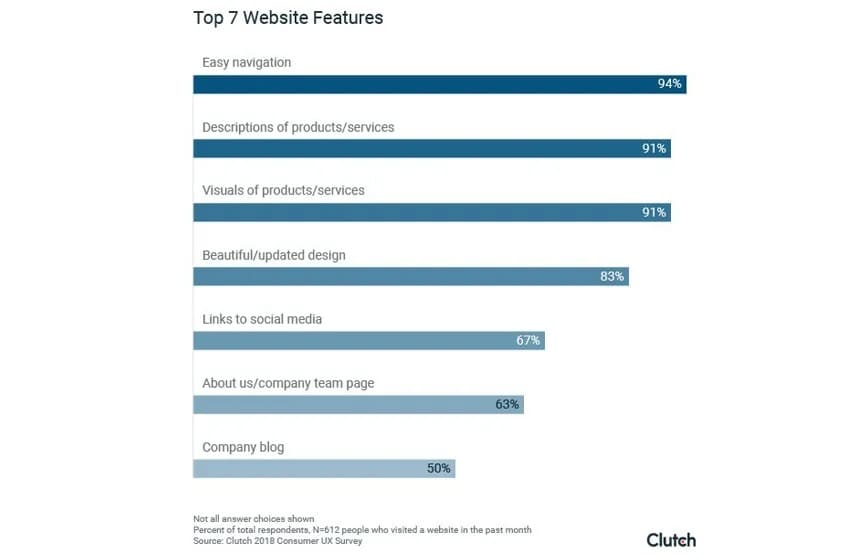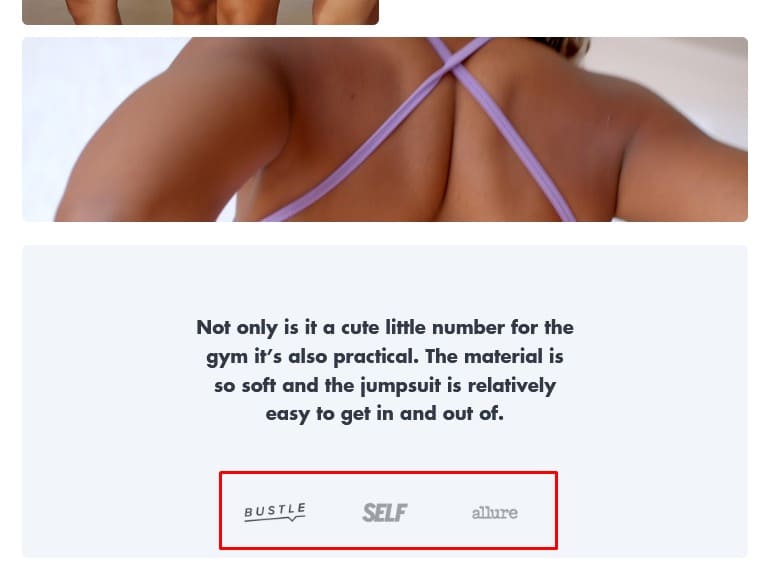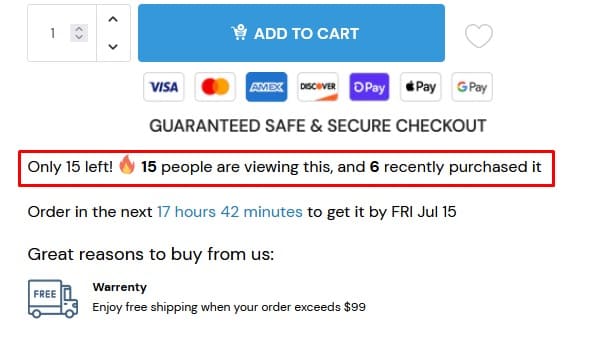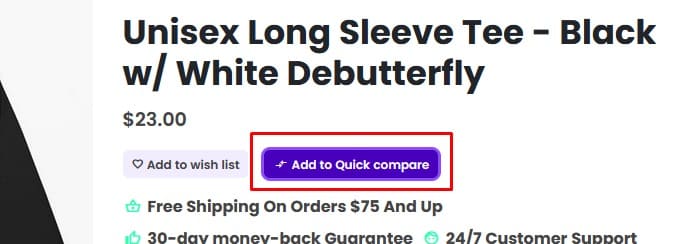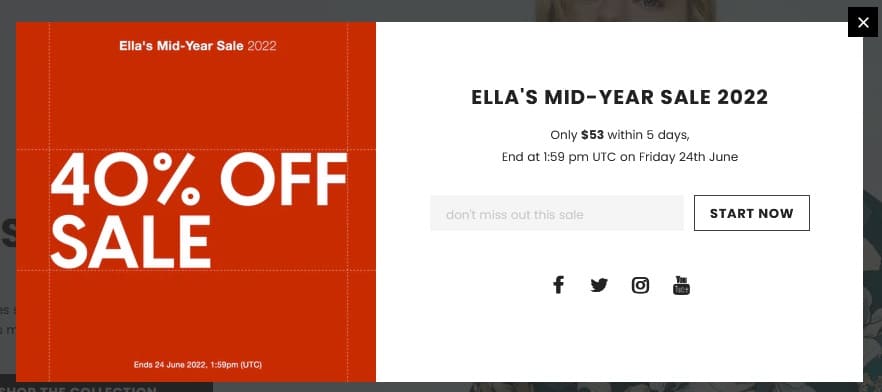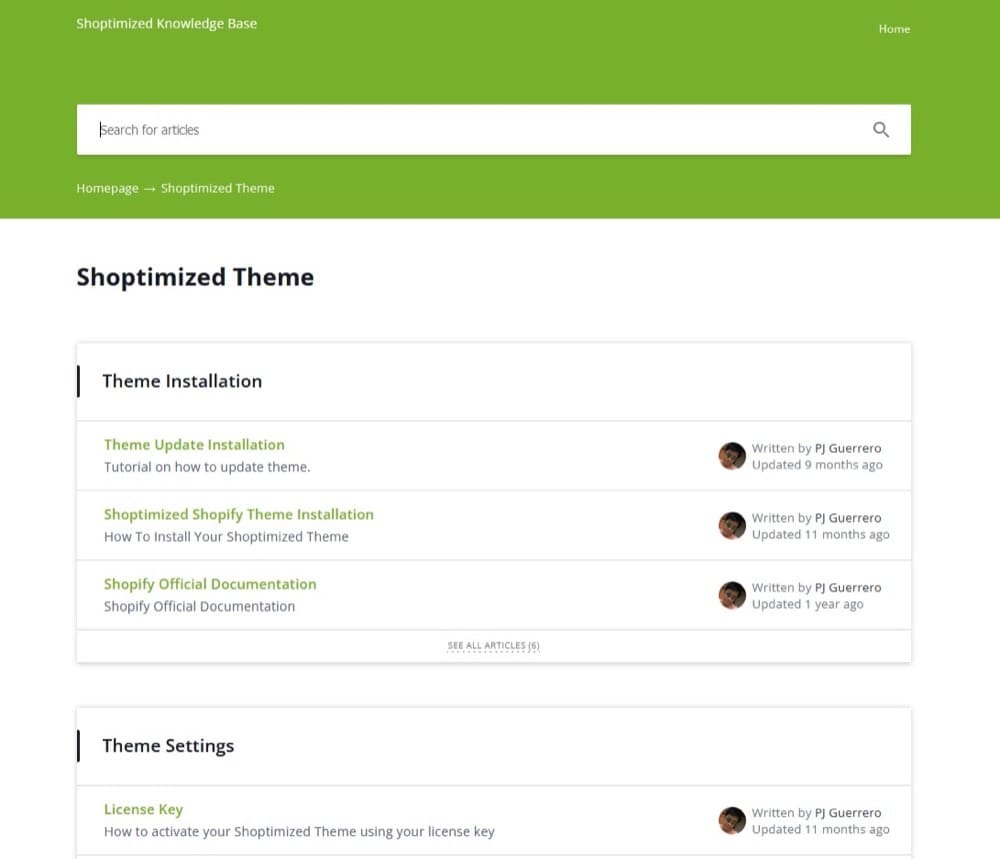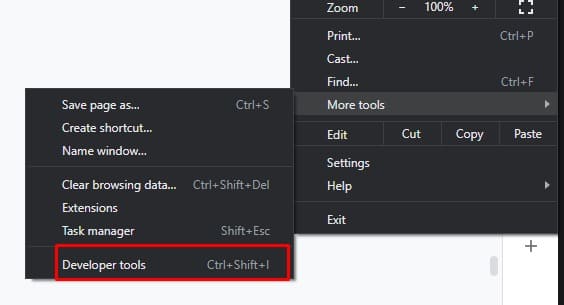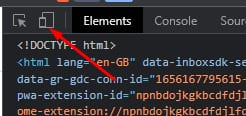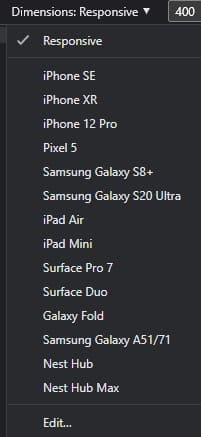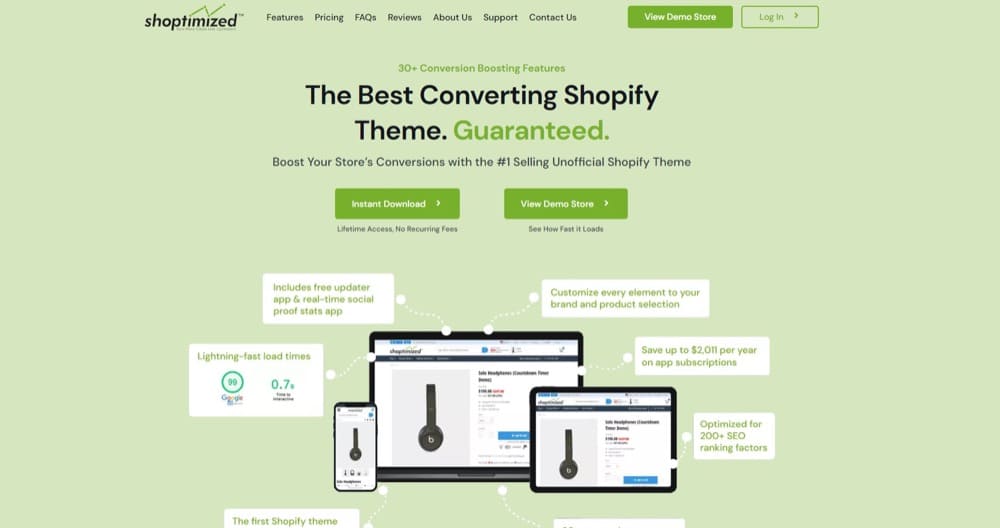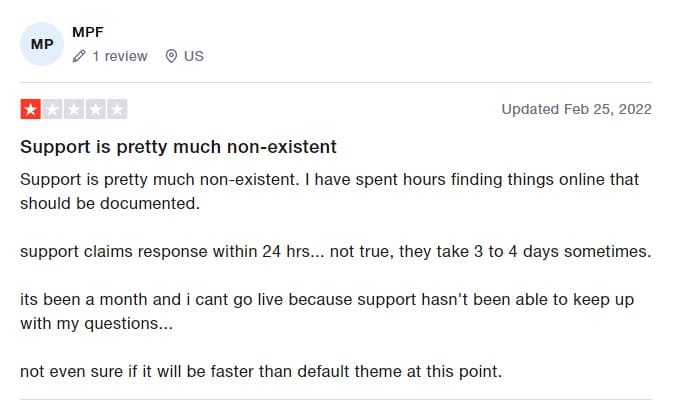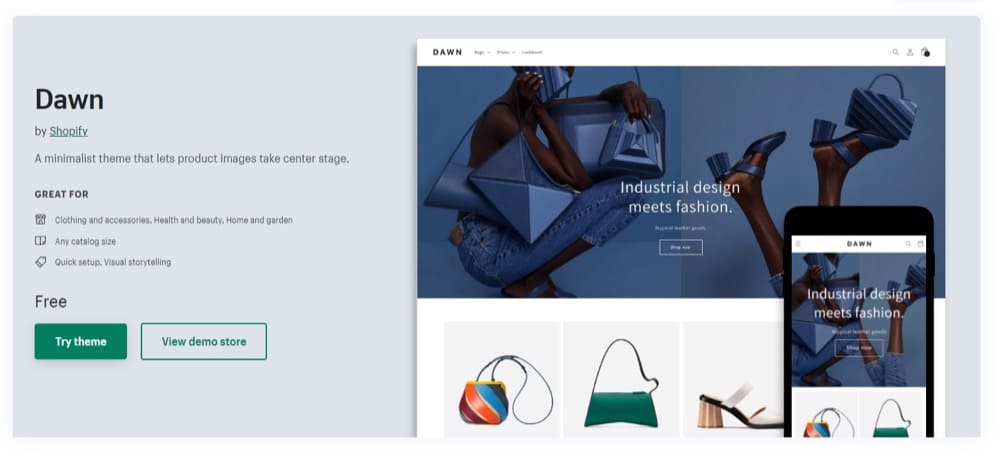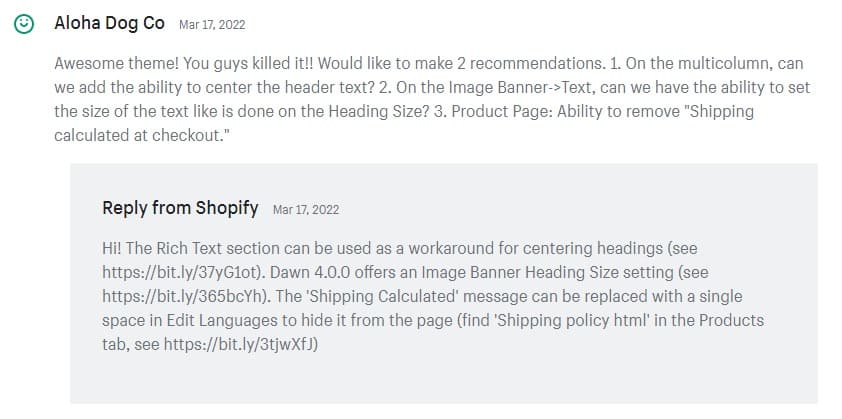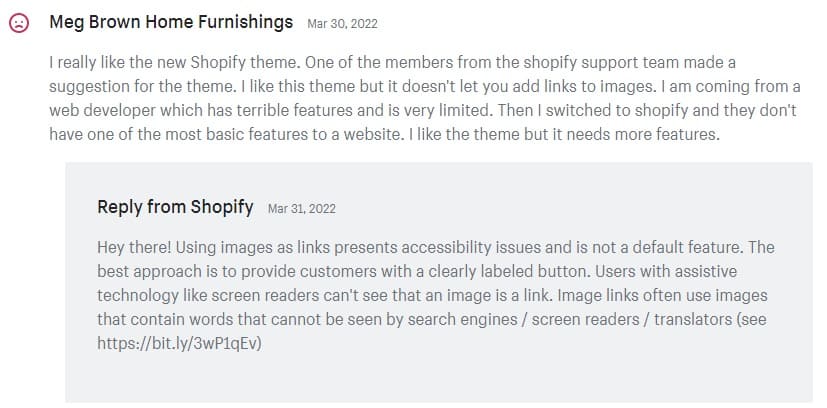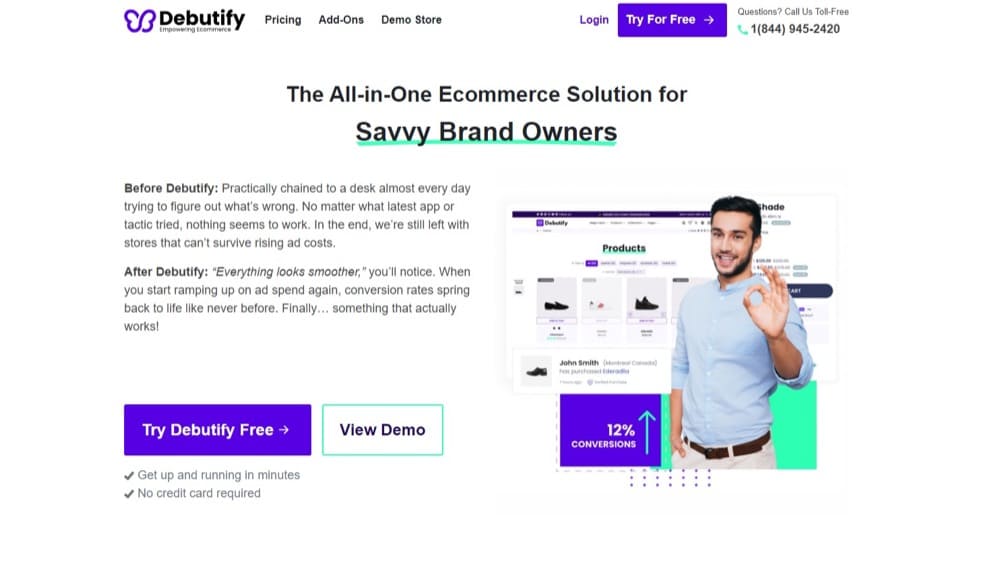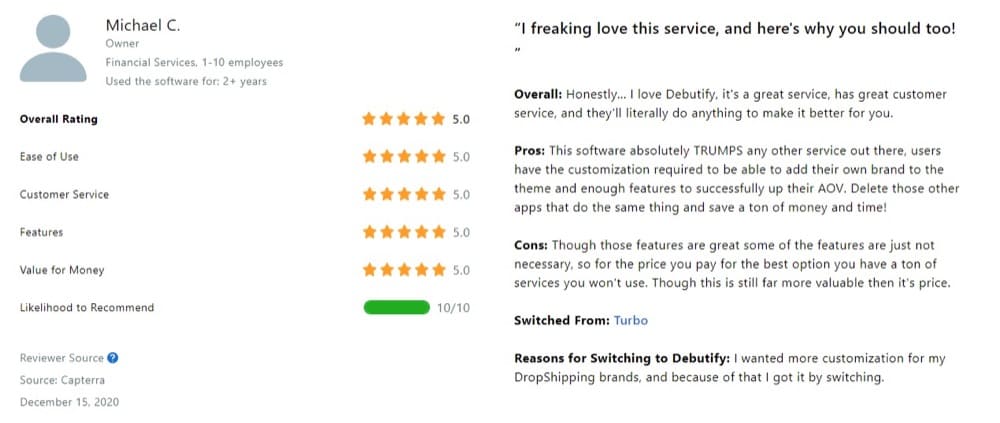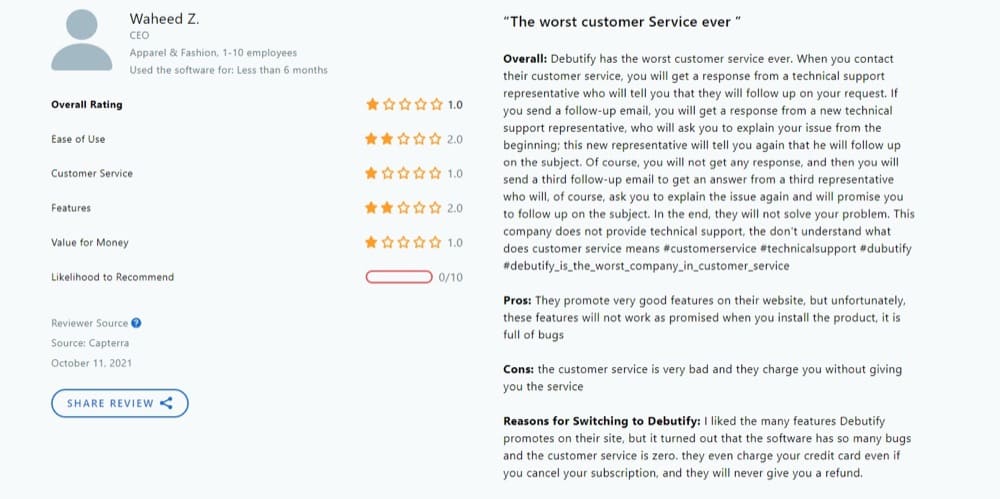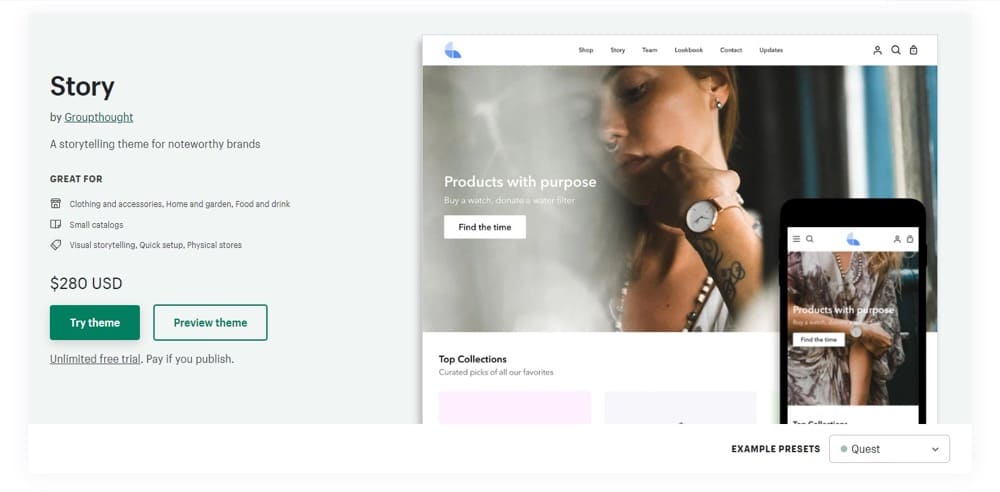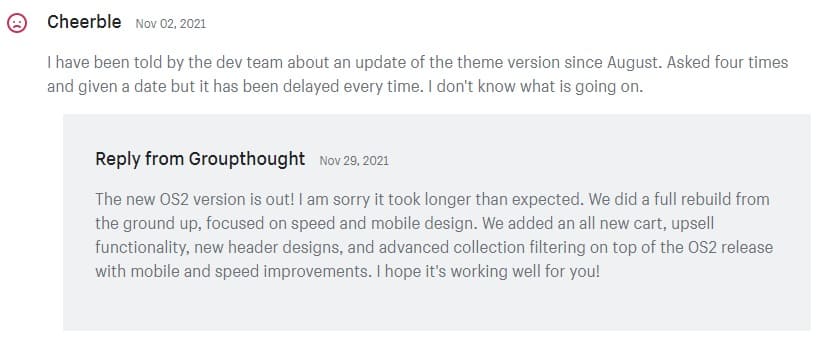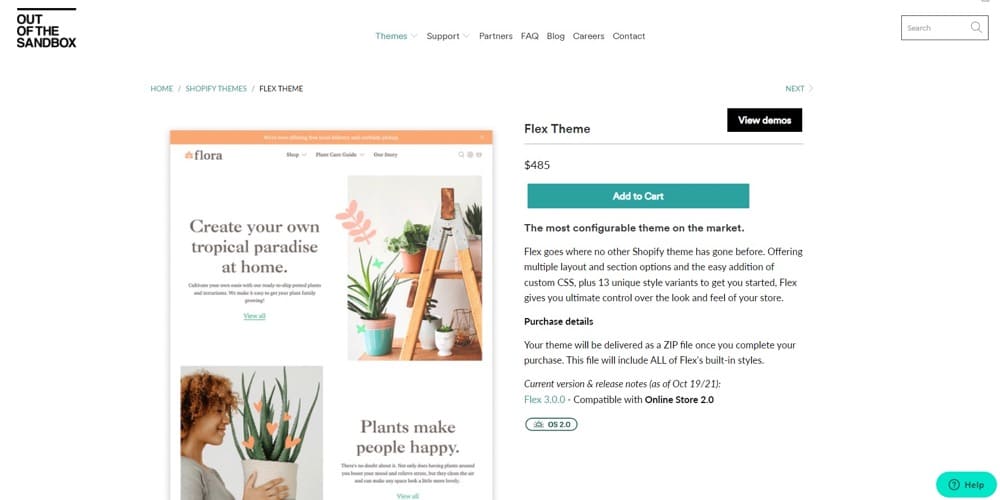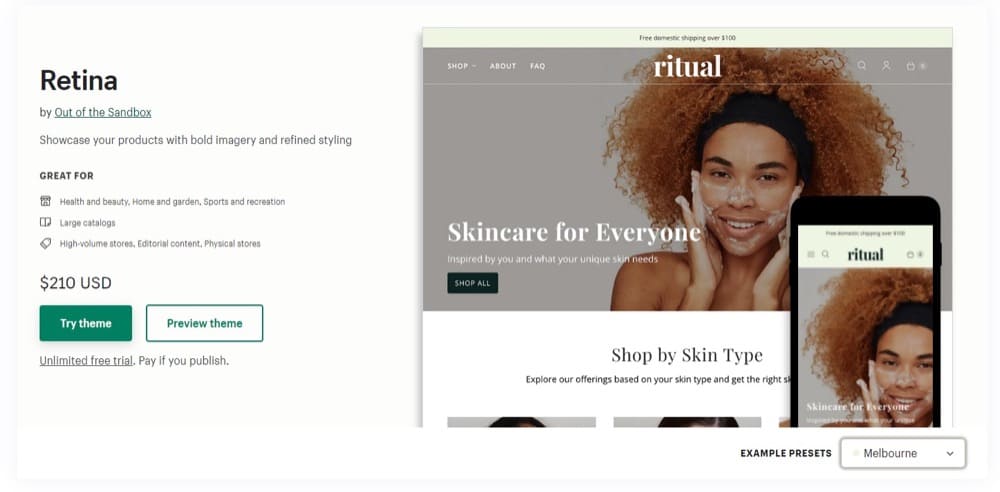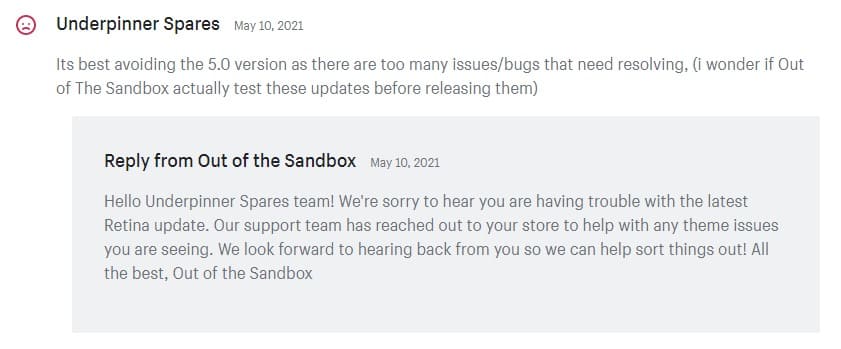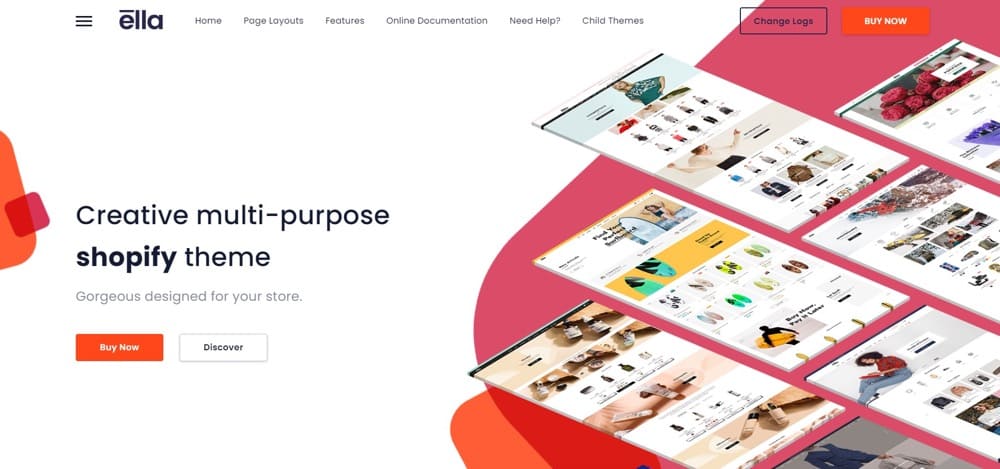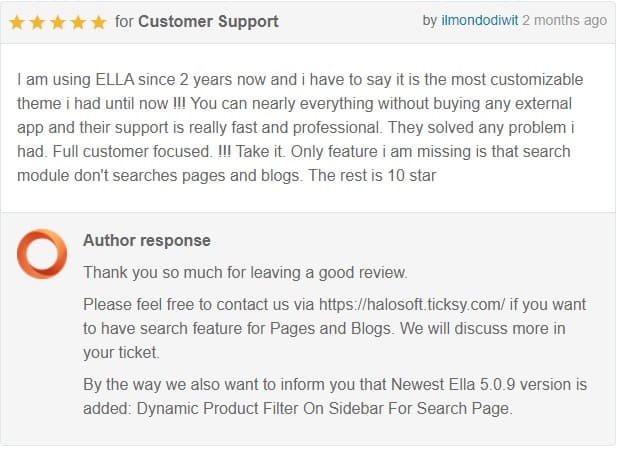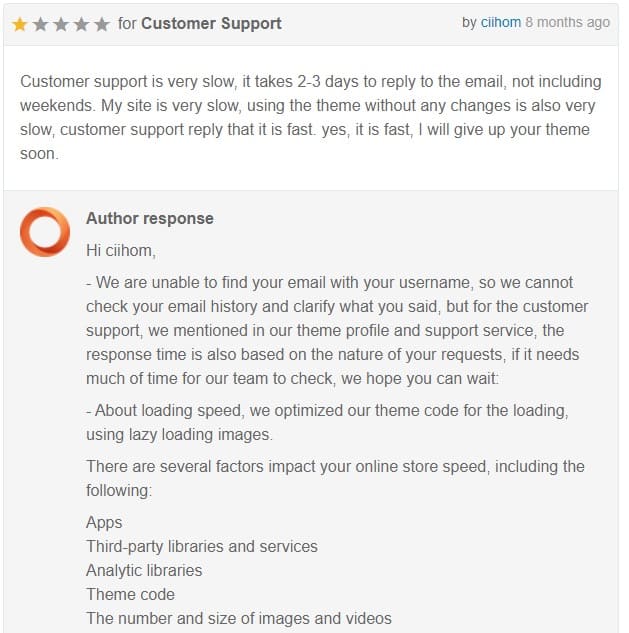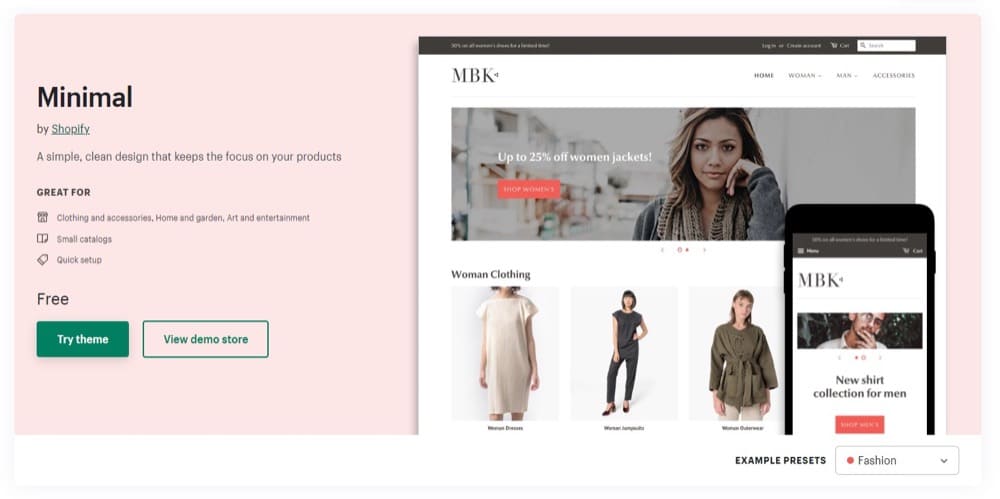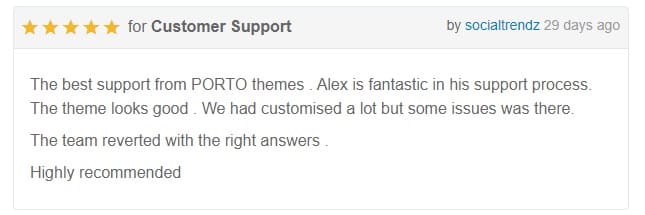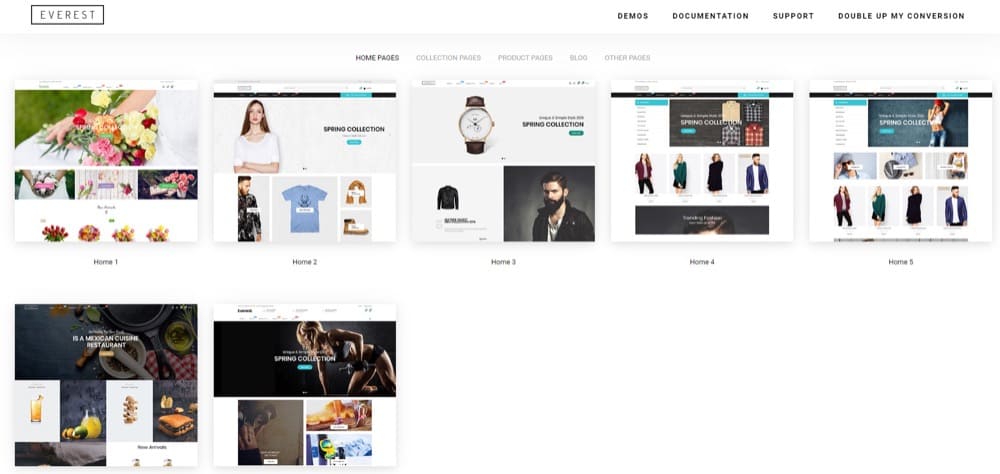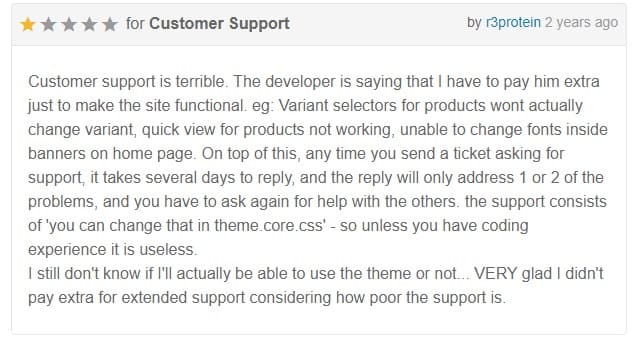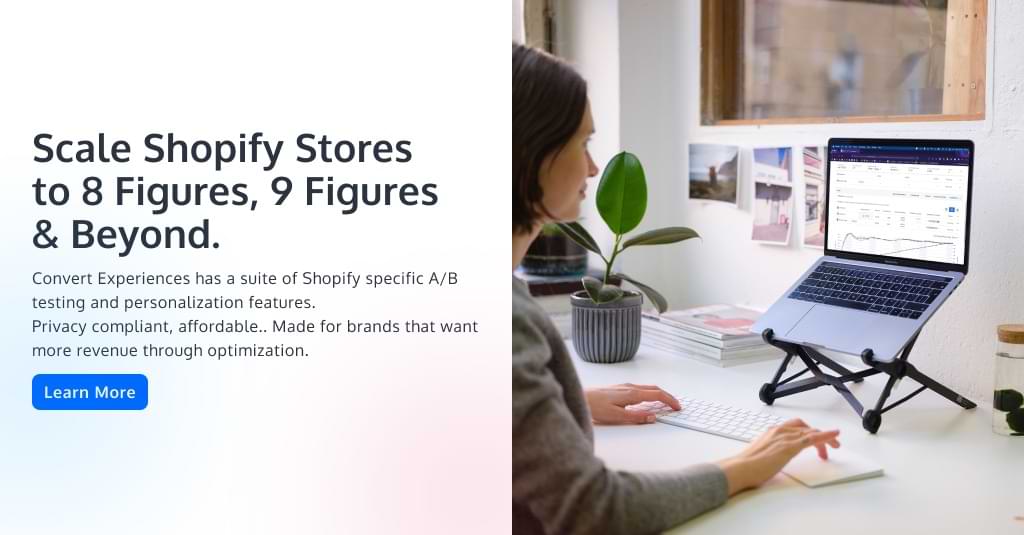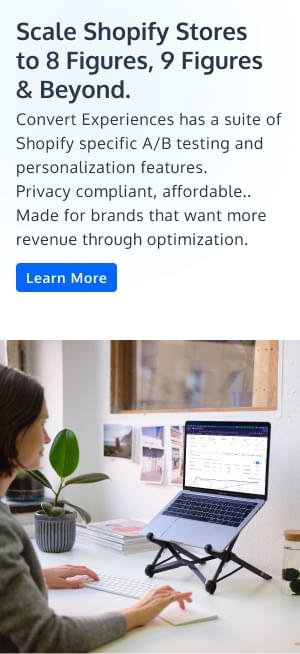Top 10 Best Converting Shopify Themes (+ How to Choose the Perfect Theme for Your Online Store)
You’re a Shopify store owner and you’re out to win.
So, in your search for a Shopify theme, you’re looking beyond aesthetics. You want a theme that has the internal mechanics to give you high conversion rates.
Not only that. You also want the theme that’s coded specifically for your niche audience. With readymade drag-and-drop features to reduce the need for third-party apps. That way, you have everything in place to keep your store revenue where you love it to be — upwards.
Your search is going to take you through 395 themes on Envato, 91 on Shopify, and several more on Etsy, Out of the Sandbox, Pixel Union, Creative Market…
Understandably, you’re stumped.
It’s easy to just avoid the struggle and pick one that looks great. But the theme you choose matters (and I’ll show you why).
So, how do you choose the best converting Shopify theme for your store?
We’ll guide you through making a smart choice, showing you what veteran Shopify merchants know about highly converting Shopify stores and the role themes play in them. And then we’ll direct you to the top 10 highest-converting Shopify themes. In the end, you’ll make the best choice — without the struggle.
Let’s go.
What is a Shopify Theme?
Already know what a Shopify theme is? Jump right to the list of the best converting Shopify themes. If not…
Take a look at this:
This is just a tiny part of the code you’ll have to write to build an online store from scratch.
But Shopify changed that. And themes made it even easier.
Shopify themes are templates that control how your online store looks and feels. They come with pre-made layouts, styles, elements, features, and more, that determine the user experience.
These themes are coded in HTML, CSS, JavaScript, and Liquid so you don’t have to do it yourself. They’re sometimes offered by Shopify and other times by third-party developers.
Depending on how the themes are built, they’ll give you differing impacts on the success of your business. Let me explain how.
Impact of Theme Selection on Your Shopify Store
Speed
Not all themes load fast. Even if your store is empty, some themes will take a few extra milliseconds or worse, whole seconds, to load after a faster one does.
What you want is a theme that’s fast. Because your user experience and SEO depend on it.
Always test the intended theme for PageSpeed Insights. And while you’re at it, test for Core Web Vitals as well. This is something all developers and speed optimization pros recommend.
Choose a Shopify theme wisely. Choosing a theme that reflects your brand is important, but so is making sure it loads quickly. So you want a responsive and modern theme. You may improve the efficiency of your Shopify theme by deactivating any features that you don’t use or don’t add value to your customers. You may also test a theme’s performance with Google PageSpeed Insights before purchasing it
Benjamin of Norsemen
Shopify themes should follow Shopify-recommended performance best practices like lazying loading below-the-fold images, optimizing liquid code, and reducing JavaScript usage.
Availability of In-Built Features
With ecommerce, a time will come when you need your online store to do more than it already does. You’ll want to add extra features to drive conversion, automate processes, or improve user experience.
If your theme comes with these features, you won’t need to invest in Shopify custom app development or pay a monthly subscription for a third-party app.
But make sure you take a balanced approach. The theme should cover your needs, but without unnecessary bells and whistles that clutter up the back-end and administrative environment.
Customization Friendliness
One popular Shopify theme can have up to 50K users. I’m going to guess you don’t want your store to look like 50,000 other stores, right?
Shopify gives merchants the freedom to access their store’s source code and change what they want. This way, you can edit your theme to your brand’s taste and improve its performance by taking out things you don’t need.
But that depends on the theme. And this is another way it impacts your store. A theme that’s difficult to customize may leave you searching for a developer or worse, wrecking the site.
Frequent Theme Updates & Maintenance
A theme that isn’t updated leaves users vulnerable to new security threats. Sure, most themes will have bugs, but you want one that is going to be updated periodically so those bugs don’t damage your business.
Not many theme developers bother to maintain them. But if you’re using the recommended themes in this article, you don’t have to worry about updates and maintenance.
Rest assured your experience won’t involve ranting about customer support in a review…
…or complaining about bugs that you had to fix yourself with custom code.
How to Choose a Shopify Theme For Your Niche?
If you’re just starting out on Shopify, finding the theme that works best with your niche is quite challenging.
There are so many options to choose from. And even though some demos look exciting at face value, you’re not sure that theme would be suited to your online store and audience.
I’ll keep it simple as I show you how to find that theme.
Here are 3 steps to pick the perfect Shopify theme for your store:
1. List your Needs
In choosing your Shopify theme, think functionality before aesthetics. If you go by looks, so many themes will catch your eye, because there’s hardly any demo that isn’t attractive.
Plus, if you see a demo featuring a fashion brand, you may be mistaken to think that theme only works for fashion stores.
And even though you like the homepage here and the blog layout on the other one, mixing them up means you have to invite a developer. That defeats the purpose of using a theme in the first place. You don’t want to code, right?
Start with a mental image (if possible, a physical one too — scribbled on a whiteboard or paper) of your online store. Who’s your target customer? How do you want them to feel when they visit your store? A luxurious classy atmosphere? Or a fun, goofy space?
What features do you want in your store? How fast do you want visitors to get to the checkout page? How often do you have promos and how do you prefer to announce them?
Do you want the cart to take a central position in the shopping experience or just be on the side, non-intrusive?
Are you big on blogging? And what about ads? Do you need a dedicated landing page for each campaign you run?
You don’t have to figure it all out, but if you can get the major things down on paper, you’re halfway there.
That said, there’s one key thing to keep in mind: You’re most likely not going to find a theme that does everything you want. But when you have these expectations laid out on paper, you can match them against the themes you’re considering and easily spot one that gets as close as possible.
You can then complement that theme with fewer third-party apps.
2. Go to Trusted Sources
In your search for the best Shopify theme to meet your ecommerce goals, you’ll find hundreds and even thousands of options – free and paid — free and paid. But not all themes are created equal.
The most trusted source is the official Shopify themes store. Why? These themes are vetted by Shopify, having gone through a due process from submission to tests and final approval.
You’ll find the least trouble with those themes. Also, they come with proper support. Because trust me, you’ll need that. And you’ll need it on time. Same thing with security updates.
Other sources will require a bit more research, but there are Shopify theme providers that have done this for so long that their amazing reputation precedes them. For example, Out of the Sandbox and Pixel Union.
But here’s where it gets tricky: Searching through themes (and templates) in marketplaces. Now, that vetting and approval process is a bit laxer here — even non-existent. You proceed at your own risk. But marketplaces for Shopify themes don’t have a great reputation.
Whatever source you choose, ensure you know the provider. Find out how supportive they are to customers, how often they update their themes, and how that theme performs based on the two major criteria below.
3. Check for these Two Key Features
- Mobile-friendliness and
- Conversion-friendliness
Many people treat their mobile sites as an afterthought. Your bottom line will suffer even more from that mindset this year than it did last year. As of March 2022, mobile devices account for 57.38% of internet traffic.
Imagine 3 out of 5 people who visit your Shopify store not viewing it in its best form. Your ideal Shopify theme must be built around an incredible mobile experience, where:
- Your hero image on your homepage is not skewed due to resolution differences
- Your offers in the sticky bar at the top are visible
- Your shoppers don’t have to scroll for ages to get to the “Add to cart” button
And a host of many other issues. Run the theme on both desktop and mobile devices. Or adjust the viewport for different screen sizes. What do you see? Is it difficult to navigate? Has the dashing layout gone all Humpty Dumpty on a mobile phone?
The same goes for conversion-friendliness. We’ll dive into the details of conversion-friendliness later in this article, but for the sake of illustrating how to choose a Shopify theme, focus on user experience.
Use the demo like a shopper. See how fast you get to a product, what it feels like to browse and scroll, and if the images are rendered correctly. Are the labels are visible? Do you feel ushered towards the checkout?
Now that you know this…
How Do You Find and Install Shopify Themes?
Shopify themes are available (both free and paid) on
- Shopify’s official theme store
- Themes marketplaces like Envato Elements, Themeforest, Creative Market, and Etsy
- The websites of Shopify theme developers like Out of the Sandbox, Archetype, and Pixel Union.
Paid Shopify themes can cost as little as $25 to as much as $400. Keep this in mind when deciding on a budget.
When you’re not getting the theme from Shopify’s theme store, you’ll have to download a zip file of the theme. To install the theme in this case, find your way to the themes window on your store’s dashboard.
Scroll down to “Theme library”. Click on the drop-down “Add theme” and choose “Upload zip file”. Locate the file and upload it to your theme library.
If you choose to start with one of the free themes, you can click on “Explore free themes” that’s right next to the upload section. Installing those is as easy as picking on and clicking “Add to theme library” at the bottom right of the pop-up window.
But if premium themes are what you’re going for, jump into the store by clicking on “Visit Theme Store” and browse through the options.
Alternatively, you can get paid Shopify themes from third-party marketplaces and developers. I’ve listed some above.
What is Shopify Theme Inspector and How to Use It?
Shopify Theme Inspector is a tool developed by Shopify for debugging the Liquid template on your Shopify store. It’s provided as a Chrome extension in your Chrome DevTools.
When you install a new theme in a new online store, it runs fast. But as you make changes to the theme, this affects the speed of your Shopify store. As a conversion-conscious merchant, you’ll want to know, “What exactly is making my store slow?”
That’s where the theme inspector comes in. It can dig into your code to pinpoint what’s causing the performance drop and show it to you on a flame graph.
The detailed steps to use it are laid out in this post by Shopify but you’ll have to bring a developer with you.
What’s the Fuss About Shopify 2.0 Themes?
Shopify 2.0 themes are part of the Online Store 2.0 update. What this update means for you, the merchant, is feature improvements that make building and editing your store’s design easier.
You won’t need a developer to make most changes to your theme, since all sections of a Shopify 2.0 theme are modular. That is, you can drag and drop sections (or blocks, like on WordPress).
Theme vendors migrate their theme templates from Liquid to JSON for these features to work.
So what’s the fuss about Shopify 2.0 themes? Should you upgrade?
This framework gives non-developers the freedom to make their online store so much more than what the original theme lets them do. You get to add, remove, and combine blocks to create unique about pages, landing pages, product pages, and more.
And these blocks are easy to get. Your theme doesn’t have a certain layout or style? You can install an app with JSON templates and create unique designs for your store.
That means you can copy a section from your homepage to customize your product pages or an about page section on your collection page — if it suits what you’re trying to achieve.
If you love this extra flexibility, then you should definitely upgrade.
How do you upgrade to Online Store 2.0 on Shopify? Use an Online Store 2.0 theme or upgrade your current theme to its latest 2.0 version. That’s just it.
What is a Conversion Friendly Shopify Theme? What Attributes Should It Have?
A conversion-friendly Shopify theme removes most friction from the ecommerce buyers’ journey and compels visitors to place orders.
What are those characteristics? Glad you asked. I’ve analyzed 50 top converting Shopify themes, taken results reported by merchants, and tied that with experiment-proven conversion drivers and recommendations by ecommerce marketers and CROs.
Does that mean there are certain themes more conversion-friendly than others? Yes, there are. Some meet these criteria better than others and, for that reason, they support store conversions better.
A chunk of the conversion work has to be done by you, but as a merchant, the right theme is a solid foundation to build on.
Here are the characteristics such themes possess:
1. Great UI and UX
Online purchases are fragile. Finding an alternative is just a browser tab and Google search away. To avoid being dumped for another store, the buying experience for your visitors not only has to be smooth, but pleasurable.
Great Shopify themes have these qualities coded into them. For one, they are fast.
The single most important thing for a Shopify conversion-friendly theme is speed. 53% of mobile website visits will be abandoned if the page takes more than 3 seconds to load. If your website loads slowly, you’re losing sales.
Philip Pages, Founder of Post Purchase Survey (and runs a mid-7-figure ecommerce brand)
Lean, lightweight themes coded by experienced developers turned out to be among the fastest themes in my research — repeatedly.
Although when you add media files and apps over time, they’ll have a significant impact on that speed. But starting with a fast theme means you can see results when you optimize for speed later.
It’s important to always check the loading speed of your Shopify theme before you decide to finally use it. Moreover, a website’s loading speed is also a criterion when search engines like Google rank websites in search results.
This means that having a website that loads fast also gives you more chances to be seen organically by your target market.
Perry Valentine, Founder of AtPerry’s
Another UX point is design. Don’t let design get in the way of a conversion. Besides being uncluttered, maximizing attention on product images and copy with legible text and high-resolution images, you also want a theme that is “click-optimized”.
Conversion-friendly Shopify themes are click-optimized. The most effective Shopify themes seek to minimize the touchpoints needed for a user to achieve their on-site goals. In practice, this means that if a user wants to make a purchase, that process should take the least amount of clicks necessary. Every additional click may act as a potential barrier inhibiting the user from making a purchase. All it takes is a continued moment of hesitance, or a navigational mishap, for the user to abandon their cart and leave the website.
It’s important to prioritize ease of access and facilitate the user’s actions throughout every stage of their journey. For this reason, the best performing Shopify themes are also the most user-friendly and simple to browse. These themes drive conversions because they understand the customers’ behavioral flow; the experience is simple and consistent from browsing the store to selecting items and checking out.
To evaluate the efficacy of your Shopify theme, browse your store through the lens of a brand new user. Ask yourself whether you can easily find what you’re looking for, or if certain actions are more difficult to perform than others. If the journey from cart to checkout is as fast and efficient as possible, you’ll know that your theme is conversion-friendly.
Aaron Gray, Co-Founder of Agency 101
Today’s shoppers choose online stores for convenience. Imagine not giving them that convenience but instead making them burn extra calories to make an order.
Your perfect Shopify theme should prioritize ease of navigation. 94% of consumers say your website must be easy to navigate as they prefer to spend less time online.
You should test the theme to ensure the navigation is intuitive and feels natural.
What you’re looking for is a browsing experience that’s instantly easy to figure out. That means, your theme should have:
- Icons that are familiar and labeled. For example, we can all agree a shopping cart icon looks like the outline of an actual shopping cart or basket.
- A properly sorted menu. You’d expect to find sunglasses under the “accessories” category of a fashion store.
- An internal search box that’s super easy to find, preferably right at the top of every page.
- Breadcrumbs so users can easily jump to pages — and it should be located where people expect breadcrumbs to be: at the top left below your logo.
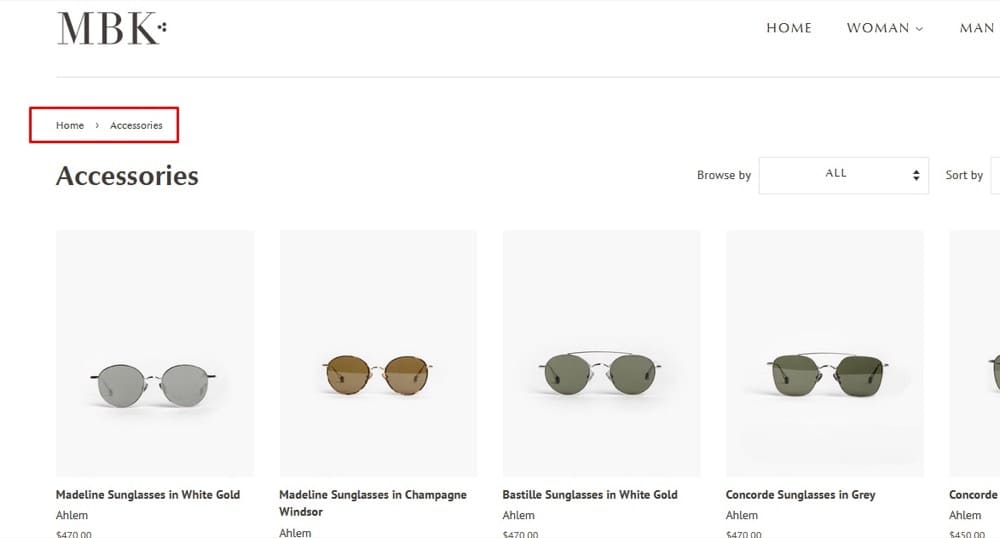
- Keep this navigation design consistent all over your store.
- Few themes like Shoptimized™ provide this (otherwise you need an app for it): Make it easy to access bestsellers right on the mega menu.
A theme that features an intuitive design adds to strategic UX which can boost your conversion rates by up to 400%.
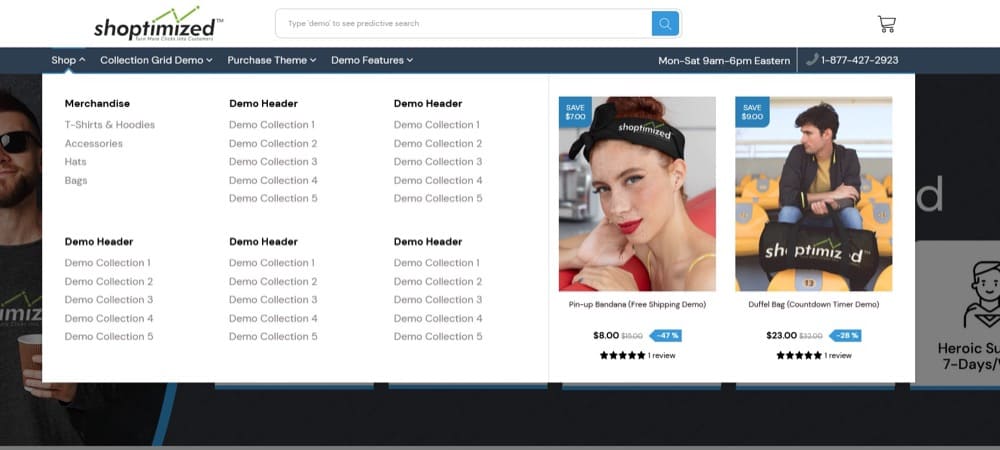
But that’s not all about navigation. There are other tasks users will want to achieve on your site. For instance, if you sell gadgets, users will want to compare specs and read reviews. Keep it simple.
Shopify themes should make it easy for users to get from one page to the next, allow easy comparisons between products, and should provide access to product reviews.
The characteristics that make a Shopify theme a better conversion driver are:
Scott Keever, Founder of Scott Keever SEO
- It allows shoppers to create profiles, make changes to it and save their payment information
- Allows [them] to easily make a wishlist
- Has a hassle-free checkout process
- If selling internationally, the theme should have a built-in translation and language support
This goes all the way down the funnel to checkout. Don’t pay so much attention to getting them to the cart that you ignore what happens after, which is where the moneymaker is.
Generally, when talking about conversions, most people think of best practices before the user clicks on the ‘add to cart’ button. Whilst, of course, this is significant, it also has to be easy to check out.
Just because the customer has clicked ‘add to cart’ doesn’t mean the journey is over. Far from it, in fact. Test this out for yourself before you choose the theme. Is it easy to find the basket button? Is it easy to add your delivery details? It is easy to pay by credit card? If any of these fail, you’ve probably lost a customer.
Ravi Davda, CEO of Rockstar Marketing
2. Add-ons
UI/UX seems to be doing most of the heavy lifting but it can’t stand alone. On the other side of the equation is conversion-driving add-ons.
After you’ve done everything to remove friction, this is where you nudge visitors towards taking action. Because friction can never be zero, as long as consumers have to take any action, there’ll be a reason not to do it (or do it immediately).
You’ll want a theme that complements its great design and ease of navigation with some add-ons, so you don’t have to install too many apps to do these tasks for you. Do you know what extra apps mean? Slower page speed.
Two themes with a wide range of add-ons to choose from are Shoptimized™ and Debutify. These add-ons include:
- Countdown timer
Shoptimized™ Theme (Source) - Trust signals
Story Theme (Source) - Social proof
Shoptimized™ Theme (Source) - Quick compare
Debutify Theme (Source) - Sticky add-to-cart
Debutify Theme (Source) - Discount
Ella Theme (Source) - Others
- Back-in-stock tags
- Inventory quantity
- Size chart
- GDPR compliance, and
- Up-selling and cross-selling
The more the merrier? Not exactly. Only stick to what you need. Don’t throw it all into your ecommerce store just because you can. That’s extra JS that’ll actually slow your site down.
Most Shopify themes nowadays are using enhanced JavaScript for sliders, content, sections, etc to make the website more aesthetically pleasing, but that results in information overload. Moreover, this JavaScript also makes it harder for Google and other search engines to crawl and render content in it.
Adeel Khan, SEO and Conversion Rate Optimizer at Super Saver Mama
Only utilize those features that you’ve tested and have found are boosting your conversion rate. Otherwise, there’s no need to slow your online store with maybes and what-ifs.
After over 4 years of testing a plethora of different themes… the key attributes of a conversion-centric Shopify theme are a quick shop feature, multiple layout options for product catalogs, and a drop-down shopping cart overview.
Marc Bromhall
3. Ease of Use
When it comes to conversion optimization of your Shopify store, the ultimate responsibility rests in your hands. Themes can do some of the work for you, but the job is yours to use that theme optimally.
It’s important to know that “conversion-friendly” is something that shouldn’t be generalized. What is conversion-friendly for a brand might not work for another.
With that in mind, what’s most important is to use a theme that prioritizes performance and customizability. You want it to be as fast and as flexible as possible so that YOU can tweak it to make it conversion-friendly.
Carlos Trujillo, Founder and Ecommerce Strategist, Gradvi
Your theme should support you through your Shopify store conversion optimization journey. That is, make it easy for you to set things in motion.
The themes ranked below have a combination of these ease of use attributes:
- No coding requirement: You need a theme you can edit without having to call on a developer each time. And that’s the beauty of Shopify 2.0 themes. You can easily edit sections across several pages, clone, and easily customize the look and feel.
- SEO readiness: Have your Shopify store SEO optimized right out of the box. You will still need to maintain that optimization in the long run, but a solid Shopify theme should start you on the right path.
- Marketing tools integration and compatibility: Read the documentation and reviews of the theme you’re considering. Make sure it doesn’t have compatibility issues with marketing tools. For instance, if you want to get into email marketing to grow sales, you don’t want a theme that doesn’t work well with MailChimp or Klaviyo. Customer reviews are ideal for these.
- Updates: The theme developers should constantly improve its conversion-boosting features, fix bugs, and upgrade its performance. Keeping up with Shopify upgrades and security changes is also crucial.
- Access to customer support: You won’t always know what to do in every instance and when you hit speed bumps, you need easy-to-access support to jolt you forward. For instance, besides a phone number to contact for support, you can also use a knowledge base. Here’s an example:
Where do you find themes like this?
The new Shopify 2.0 themes are a great place to start for any e-commerce business because they’re typically faster than older themes and include enhanced options for page layouts so brands can guide consumers down the purchase pathway more efficiently.
Dan Cassidy, CEO/Founder at Brandhopper Digital
The top 10 conversion-friendly Shopify themes we’ve listed below, including the third party themes, have these attributes. You don’t have to struggle to set up a high-converting Shopify store.
4. Mobile-friendliness
Perry Valentine added:
Nowadays, most people prefer shopping online through their phones, which is why using a theme that is also optimized for mobile is important. Without a site that is mobile-friendly, you risk losing your customers to competitors who already optimized their websites.
Not only that, but you’re also risking turning potential buyers off and ruining your brand. 85% of adults believe your site on mobile should be just as good or even better than the desktop version.
Consumers are shopping while commuting to work on a bus, on their couch, or on their toilet seats during a halftime break. Expecting your sales to only come from desktop devices in 2022 is wrong — you’re losing out on more than half of your potential sales.
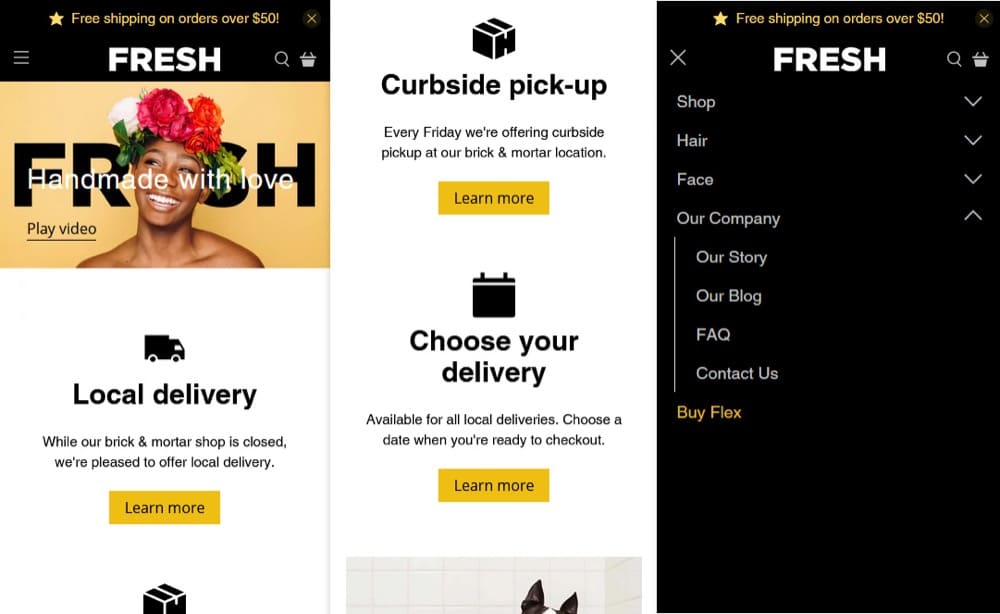
Find a responsive Shopify theme. So that anything you create in the desktop version is automatically translated to its mobile equivalent.
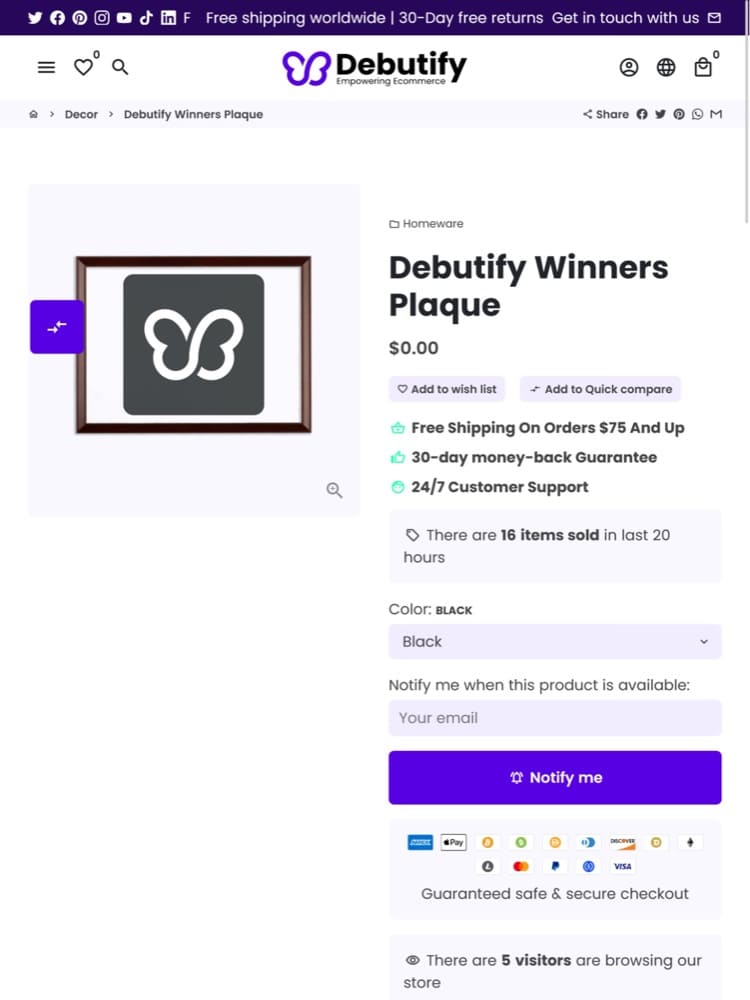
But that’s not the end. Go into the mobile view (even for tablets) and make tweaks to optimize the user experience there too. Treat it as a separate entity — like a different version of your site, not just a photocopy.
How to inspect a Shopify theme to make sure it’s mobile-friendly?
- First, load a demo store for that theme. Most great themes have an option to show you a demo of the theme — how it’ll look in a real life store.
- Go to your desktop browser menu. On Chrome, that’s the 3 dots on the top right of your screen. Find “More tools” and then click on “Developer tools”. You can use shortcuts Ctrl+Shift+I on PC or Option+Command+I on Mac. This works similarly on other browsers like Edge and Firefox.
- On the window that opens, find the icon that looks like a phone next to a tablet. It’s usually in the top right or top left corner depending on your browser, and labeled “toggle device toolbar” or “responsive design mode”.
- You can also use shortcuts: Ctrl + Shift + M (on PC) or Command + Shift + M (on Mac). When you click on the icon, you’ll enter the responsive design mode. On the top bar, you can choose the device you want to simulate. Choose various ones to view the demo store.Choose one at a time and while selected, navigate the store and see if everything works, looks, and feels great.
What About A/B Testing and Shopify Themes?
Adeel Khan also mentioned:
Another major characteristic of conversion-friendly Shopify themes is that they allow you to A/B tests easily. This way webmasters can easily test CTAs, headlines, etc.
Why do you need to A/B test a Shopify theme? Reading the features and documentation of a theme before deciding that one is better than the other is cool. What is better is actually split testing them.
Experimentation can actually give a context-specific answer to how different themes convert for your niche, audience, and products. This is the validated way to tag a theme “conversion friendly” — for you.
On the other hand, when you’ve chosen a theme, built an online store, and are ready to maximize its conversion power, there are some things you’d do. One is smart, the other is smarter.
- Check out best practices for highly converting Shopify stores and copy them into your store, or
- Study the qualitative and quantitative data you’ve gathered so far, come up with hypotheses of what could improve your KPIs, and test them
Can you guess which one is smarter?
If you chose the “B”, you’re on point. That’s a smarter way to improve your Shopify store’s conversion rate and extract more revenue from your traffic.
Besides that, A/B testing on your Shopify store
- Lowers the cost of innovating — you spend less on a dev team with client-side A/B testing and
- Helps you validate ideas and learn about your unique audience better
But you need to get a theme that supports A/B testing. Plus, this is much easier when you’re on Shopify Plus. That’s another thing to keep in mind during your search.
The Top 10 Conversion Friendly Shopify Themes of All Time
Considering what we now know about conversion-friendly Shopify themes, I researched the top 50 Shopify themes and then narrowed them down to the top 10 based on a rating I developed.
Note: Although subjective, this rating is based on
- The criteria prescribed by the experts I spoke to, and
- My inspection of each of the themes and how well they meet the four attributes above (including their sub-attributes)
So, I’ve graded the UI and UX, available add-ons, ease of use, and mobile-friendliness of each theme by percentage and the average is the “conversion-friendliness (CF) rating”.
Best Converting Shopify Themes for 2022
Let’s dive into the top 10 highest-converting Shopify themes that can contribute to the success of your ecommerce online business. Ranked by CF rating.
1. ShoptimizedTM
CF Rating: 96.67%
Ratings: 3.7 out of 5 stars on Trustpilot (based on 81 reviews)
Pricing: Starts at $167 one-time payment
Niche it’s suited for: Any niche and a favorite among dropshippers
Arguably the most feature-packed Shopify theme that exists — with 30+ conversion-boosting features. But don’t let that be a comment on its speed. This theme developed by Conversion Rate Specialist Bradley Long is one of the fastest themes and is also optimized for mobile devices.
One of my favorite things about Shoptimized is the sheer magnitude of features it packs, eliminating the need to install several Shopify apps. According to the developers, you save up to $2,011 on apps by using the built-in alternatives.
Shoptimized comes with intensive ecommerce training and a thriving community where you can get support to grow your Shopify business.
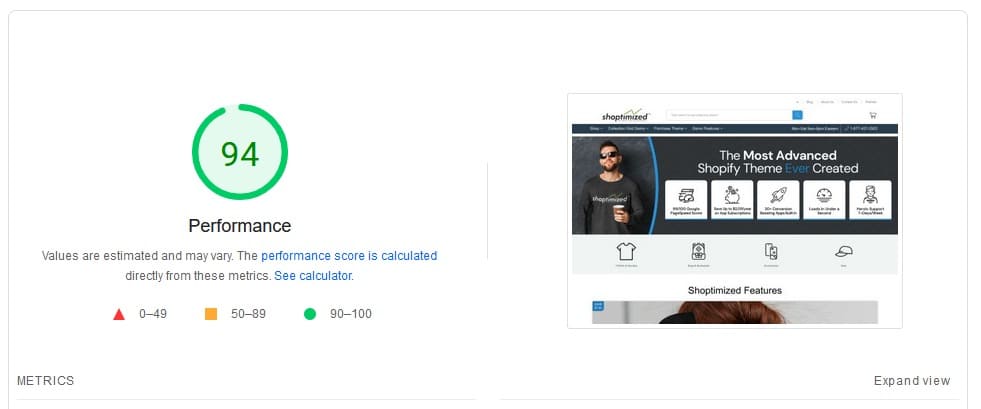
Important features:
- Integrates with popular marketing tools
- Email, upsell/cross-sell, and social-proof pop-ups
- Currency converter (or switcher)
- Countdown timer
- Video embedding
- Mega menu, and much more
Positive review:
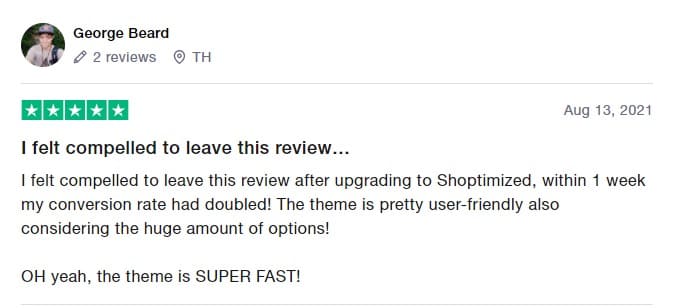
Critical review:
2. Dawn
If you’re setting up a Shopify store for the first time in 2022, you’ll discover Dawn is your default theme. But is it worth it? Does Shopify really give you the best option in the free themes category?
On the other hand, if this is the first time you’re meeting this theme, let’s see if you should try it out.
CF Rating: 96.00%
Ratings: 40% of its 60 reviews on Shopify Themes are positive (but only 23% are negative, the rest have mixed feelings)
Pricing: Free
Niche it’s suited for: Clothing and accessories, Health and beauty, Home and garden
Dawn is one of the few free official Shopify themes. It’s the default theme for new stores: lightweight, minimalist, and fast. When you’re starting out, getting your feet wet in the Shopify ecommerce space, this is a great place to start.
Further down your Shopify journey, it can still be a valuable ally — offering you a chic design that’s built around accentuating your product images while you keep the power to customize the UX of your store as you please.
Since it’s an official theme, you get one of the best customer support, security updates, and smooth integration with apps from the official Shopify app store. And it stays fast since it’s built lean and without too many complex features, just the basics.
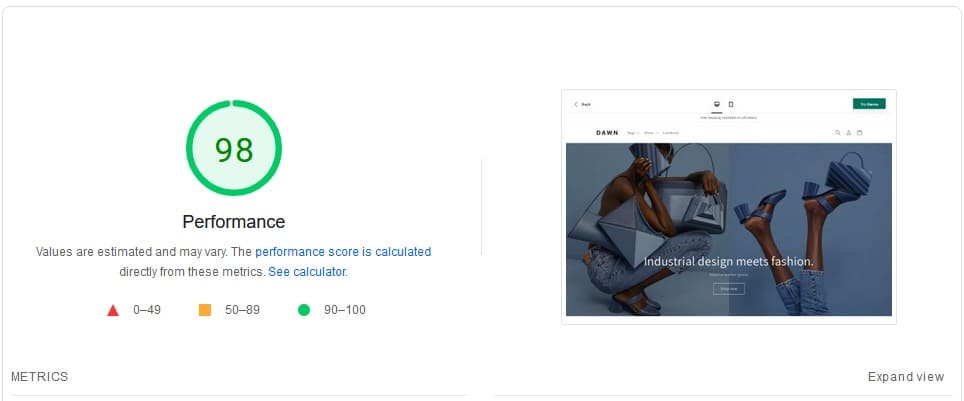
Important features:
- Recommended products
- Blogging
- Product videos
- Lookbooks
- Enhanced search
- Sticky header
Positive review:
Critical review:
3. Debutify
CF Rating: 95.78%
Ratings: 4.5 out of 5 stars from 144 reviews on Capterra
Pricing: Starts free. Then the starter plan costs $21.75/mo, up to $111.75/mo on the enterprise plan.
Niche it’s suited for: Dropshipping, Lifestyle, Health and beauty, Sport, Home and garden
Debutify is mobile-ready from the start and provides you with the features you need to keep your conversion rates up. It comes with 51+ in-built conversion boosters including automatic geolocation, back-in-stock tag, cart discounts, and more.
This is one of the few themes that also provides exclusive training and mentoring, helping you make the most out of your ecommerce website. Count on Debutify’s developers and support team to help you reach revenue and growth goals.
Its pricing is friendly, but if you’re opting for the free option, you’ll get only basic support. Only 5 of its 50+ add-ons become available to you when you go for the starter plan.
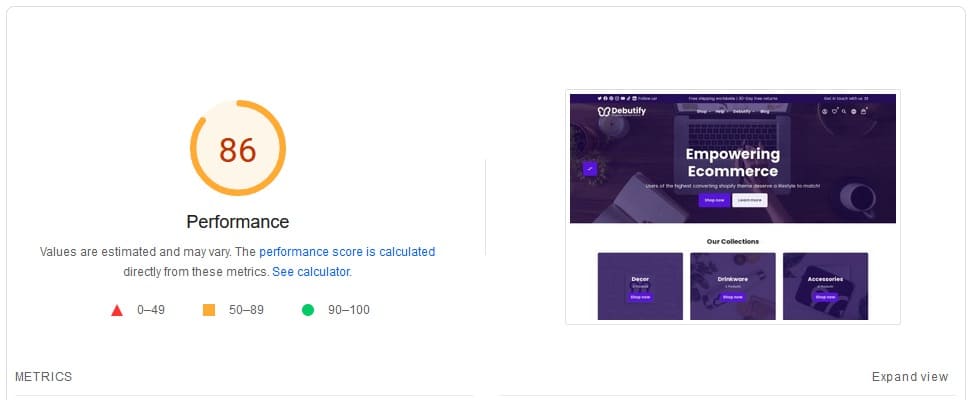
Important features:
- Sticky add to cart
- Upsell bundles
- Trust badges
- Social discount
- Upsell pop-ups
- Size chart
- Page speed booster
Positive review:
Critical review:
4. Story
CF Rating: 95.00%
Ratings: 94% of its 18 reviews on Shopify Themes are positive
Pricing: $280 (an unlimited free trial is available — you pay when you go live)
Niche it’s suited for: Clothing and accessories, home and garden, food and drink
Story does what its name suggests — it is for ecommerce brands who have stories to tell around their products. With that in mind, you get features that allow you to harness various media (text, images, videos) to guide your web visitor through a visual storytelling journey.
A stunning thing about it you probably won’t find on most themes out there is the “Team showcase” feature. You can use this to get personal with your audience and show them product timelines as well as the people behind your brand.
What’s a better way to build transparency and inspire customer loyalty?
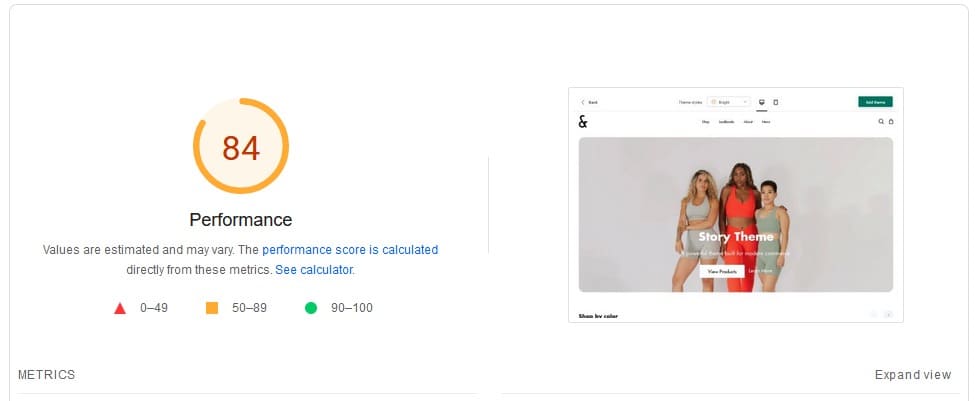
Important features:
- Product pages optimized for storytelling
- Sidebar filter
- Lookbook mode
- Integrated social media
Positive review:
Critical review:
5. Flex
CF Rating: 94.11%
Ratings: 4.9 out of 5 stars from 52 reviews (but those are from Out of the Sandbox’s website)
Pricing: $485
Niche it’s suited for: Apparel and clothing, gifts, health and beauty, art and entertainment, home and garden, food and drinks
If you want to flex extra website design customizations, go with Flex. This theme allows you to choose from multiple layouts and section options to create a unique look and feel for your Shopify store. And if you want to tweak it further, it’s easy to customize with CSS additions.
While you have more freedom to implement design ideas that influence your store’s conversion rate, Flex remains fast, keeping your user experience competitively awesome.
It comes with pre-built demo shops, so whether you have developer skills or just need a plug-n-play theme, Flex suits your needs. Pick an option and start building your store.
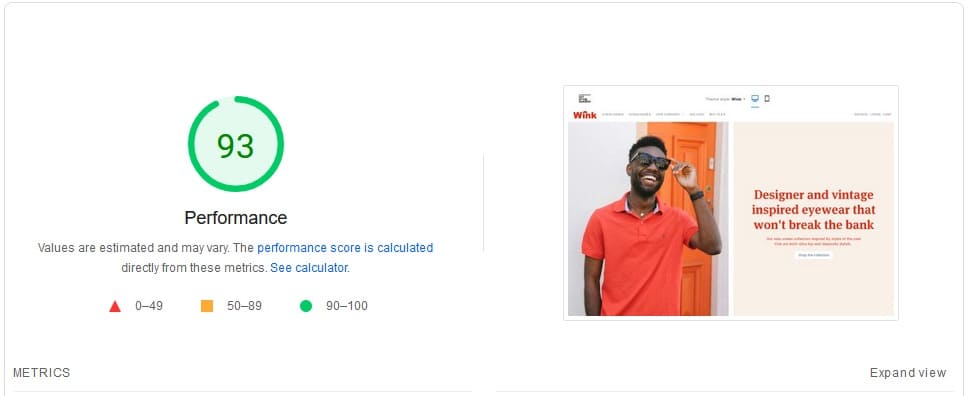
Important features:
- Mega menus and drop-downs
- CSS customizations
- Full documentation and video tutorials
- Multiple layouts, styles, and visual elements
Positive review:
Critical review:
6. Retina
CF Rating: 94.00%
Ratings: 97% of its 271 reviews on Shopify Themes are positive
Pricing: $210 one-time payment
Niche it’s suited for: Health and beauty, home and garden, sports and recreation
Retina could be the most popular unofficial Shopify theme. Plus, it’s one of the first. Out of the Sandbox developed Retina for brands that are community-oriented and want to feature social proof as the main conversion driver.
It’s a solid theme that’s fully optimized for mobile and offers you the tools you need to provide a great user experience and drive conversions. You can easily customize everything from the header and banner to collections and super menu.
They provide great customer support so you get the help you need to improve your SEO, get the on-brand design you want, and grow your ecommerce revenue.
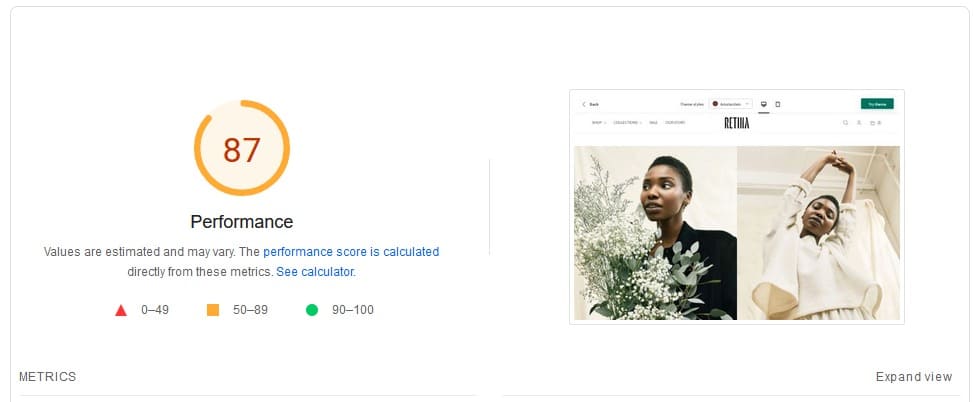
Important features:
- Ideal for large images
- Slide-out and sticky cart
- FAQ template
- Banner creator
- Convert currency by GeoIP
- Product page builder
- Progressive web apps
Positive review:
Critical review:
7. Ella
CF Rating: 91.78%
Ratings: 4.83 out of 5 stars based on 688 reviews on Envato Market
Pricing: $89 ($116.75 when you extend support to 12 months)
Niche it’s suited for: Apparel and clothing, Garden and pets, Electronics and gadgets, Health and beauty
Developed by Halothemes, Ella is a multipurpose Shopify theme with several styles and layouts to help you create a custom look and feel for your online store. It’s easy to create a conversion-friendly UI/UX with Ella with lots of features you can pick from while keeping the loading speed fast.
Since, like some themes on this list, it’s provided outside Shopify in a marketplace for themes, you’ll have to download it in a zip format and upload it to your theme library on Shopify. That’s an easy process that I showed here.
Ella is fully-responsive, fast, and even has a 1-click checkout feature. Check out other features below.
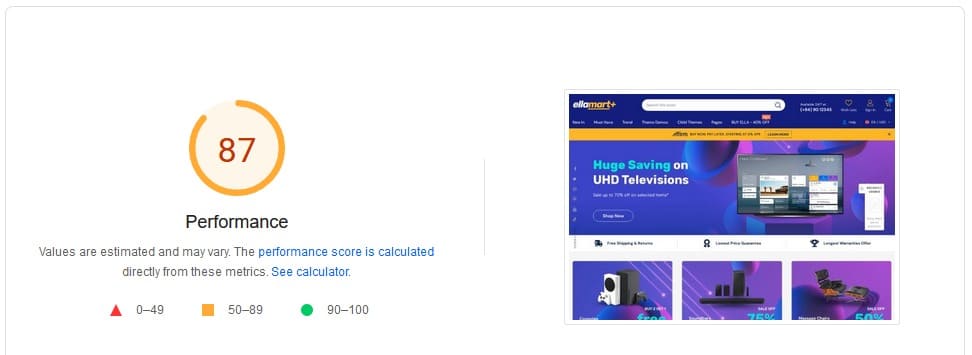
Important features:
- In-built multiple language support
- GDPR cookie popup
- Sticky add to cart
- Upsell bundled products
- Ask an expert form
- Ajax infinite scroll module
- Lookbook module
- Instagram gallery
- Auto currency conversion by geo location
- Automatic image resize
Positive review:
Critical review:
8. Minimal
CF Rating: 90.22%
Ratings: 83% of its 98 reviews on Shopify Themes are positive
Pricing: Free
Niche it’s suited for: Clothing and accessories, home and garden, art and entertainment
If you have a small inventory, meet Minimal. It’s an official Shopify theme developed with a focus on the products. It has lightweight navigation and features product slideshows in an uncluttered, responsive design.
You want speed? You’ve got it. This theme works if your visitors are ready to make a purchase. That way, you’ve removed all the distractions between them and the checkout with a minimal design provided to you for free.
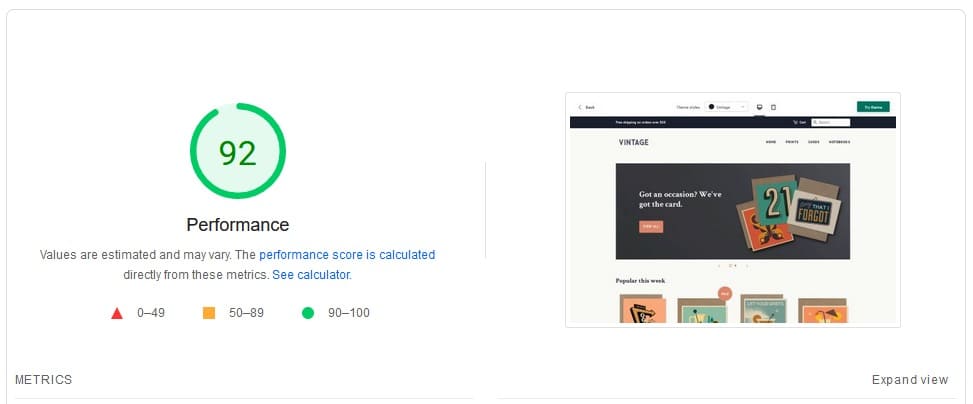
Important features:
- Video on homepage
- Product filter
- Three styles
- Support is provided by Shopify
Positive review:
Critical review:
9. Wokiee
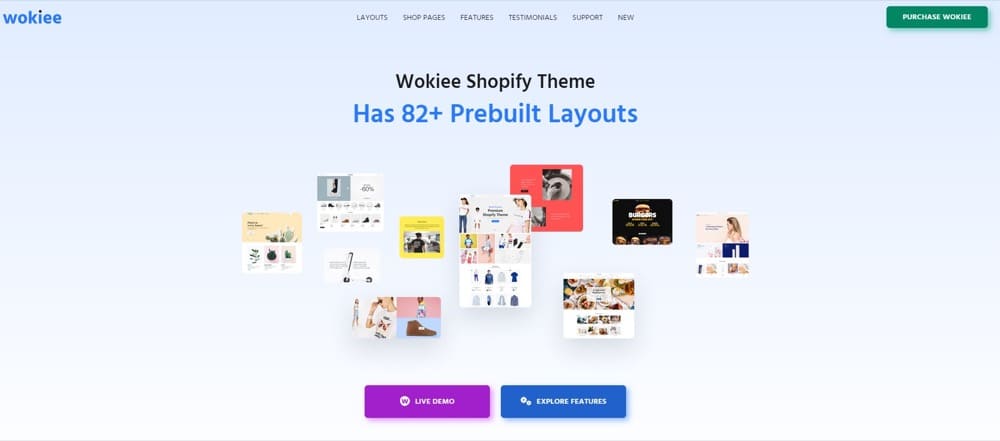
CF Rating: 85.78%
Ratings: 4.99 stars out of 5 (based on 416 reviews on Envato Market)
Pricing: $89 with 6 months support ($116.75 with 12 months support)
Niche it’s suited for: Clothing and apparel, Food and drinks, Electronics
Wokiee Shopify theme is the “best-rated item on Themeforest” and “recommended by Envato tuts+”. And for real, they have a lot of fans and only one negative review out of 416. It’s a mobile-friendly Shopify theme built for conversion by providing a superior user experience.
You can build almost any online store with Wokiee. They give lots of design options to choose from — several layouts and styles to meet your homepage, collections, and product pages customization needs.
And that’s not all. You also get access to their knowledge resources, which include detailed documentation, a support forum, and video tutorials.
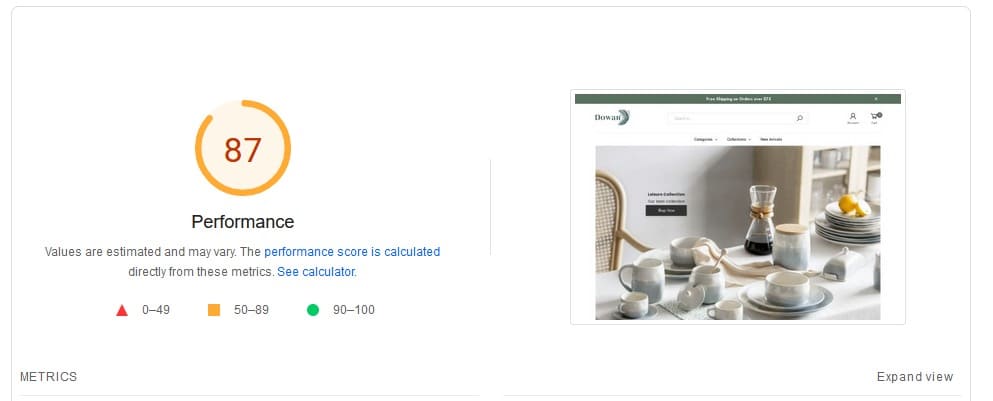
Important features:
- Wishlist
- Automatic image resize
- Mega menu
- Instagram shop/feed
- Content management system
- Related products
Positive review:
Critical review:
10. Everest
CF Rating: 82.11%
Ratings: 3.62 out of 5 stars from 24 reviews on Envato Market
Pricing: $59 ($75.50 to extend support to 12 months)
Niche it’s suited for: Clothing and accessories, technology, furniture
Everest is another Shopify theme built around optimizing conversion rates. There’s so much you can do with this theme right out of the box. Considering its price, that’s a steal.
Take the product page, for example, you can add a countdown timer on it to show how long an offer will last. Also, you can choose from 6 layout options to show your products in their best light.
One other feature I like about Everest is that its mega menu can feature products on them. That’s a cool way to utilize that real estate to promote best-selling products and get visitors right to those product pages fast.
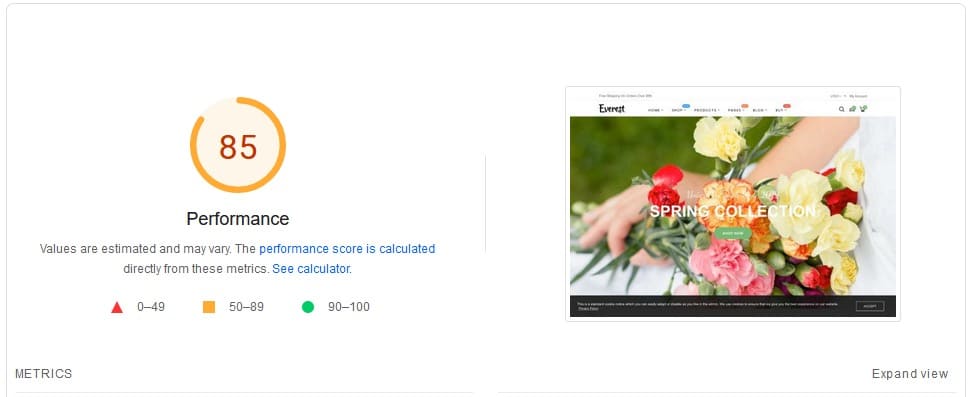
Important features:
- Integrates with off-canvas menu
- Integrates with font awesome and ionicons
- Ajax shop by price slider
- Ajax add to car, Ajax compare, and Ajax wishlist
- Sticky menus
- Ajax paging and toolbar
- Slider for upsells and related product blocks
Positive review:
Critical review:
Best Converting Free Shopify Themes
18% of the themes on Shopify’s official theme store are free. (I did the math.) So, if you’re looking for free options that also convert well, you’re not short of options.
In fact, Dawn and Minimal are two such themes. While they may be limited in terms of features, they’re a great place to start if your ecommerce business doesn’t require complex capabilities — yet.
But assuming you have the budget for it, is it worth paying for a Shopify theme?
Free themes are a great way to get started in ecommerce. Most of them have most things you need to get into full swing and start earning revenue on Shopify.
But if you want flexibility, support, and superior design options, opt for paid themes. Paid themes are usually a product of theme developers who are incentivized by profit to
- Boost page speed
- Add conversion-friendly features
- Offer more design options
- Make it easy to use and
- Provide support to users
While free themes are ideal when you’re just checking out Shopify or starting on a tight budget, once you’re ready, it’s worth it to switch to premium themes. And when you do, revisit this list to find the best converting Shopify theme for your online store.
Written By
Uwemedimo Usa

Edited By
Carmen Apostu

